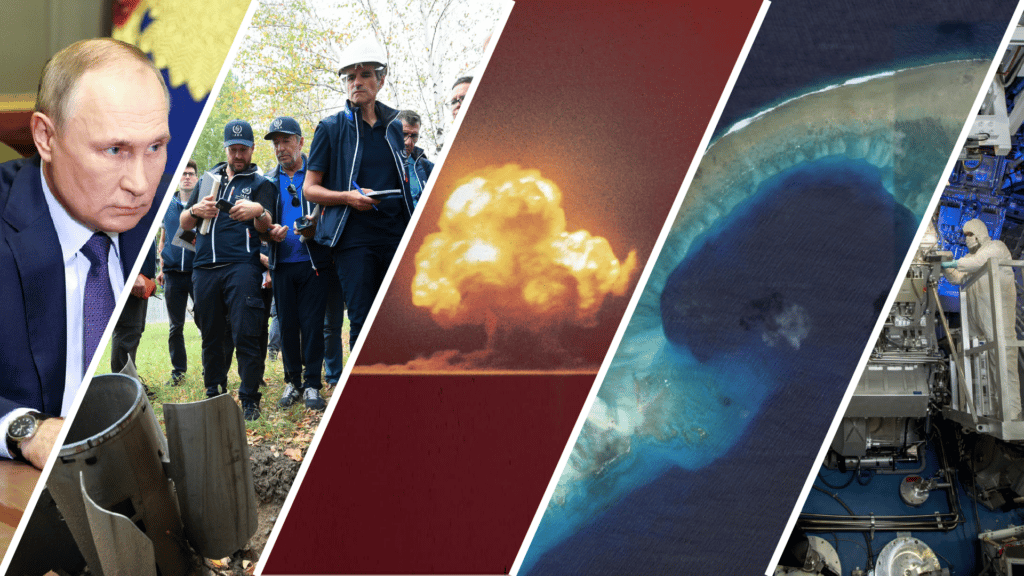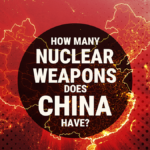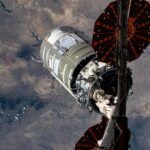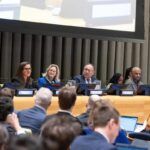The 2022 nuclear year in review: A global nuclear order in shambles
By François Diaz-Maurin | December 26, 2022
 The Bulletin's 2022 nuclear year in review.
The Bulletin's 2022 nuclear year in review.
It is hard to find a year filled with more concerns about nuclear risk than 2022. There surely was 1986 and the Chernobyl reactor accident. There was also 1962 and the Cuban Missile Crisis. And, of course, there was 1945 and the atomic bombings of Hiroshima and Nagasaki.
But this year, all sorts of nuclear risks coincided.
Russia, losing on the ground, contemplated the use of nuclear weapons in its war against Ukraine—recklessly threatening the nuclear taboo, a 77-year tradition of non-use. Also in Ukraine, nuclear reactors and nuclear facilities became targets of military attacks. Elsewhere, North Korea test-launched more ballistic missiles than it ever had in a single year and even seems to be preparing for a nuclear test. Iran resumed construction of its underground nuclear complex, disconnected IAEA surveillance cameras, and accelerated its uranium enrichment program, leaving it only months away from possibly testing a nuclear explosive or deploying a crude nuclear warhead on a ballistic missile, if it wishes to do so. In response, Saudi Arabia took further steps toward enriching uranium, also refusing IAEA inspections that would ensure the Kingdom does not conduct covert nuclear weapons-related activities.
Despite all these concerns, efforts of nuclear non-proliferation and disarmament failed to achieve any meaningful result this year. Participants in the first meeting of states parties of the Treaty on the Prohibition of Nuclear Weapons (TPNW), also known as the ban treaty, could not agree on calling out Russia’s nuclear threats and rhetoric in its war against Ukraine. The long-awaited review conference of the parties to the Treaty on the Non-Proliferation of Nuclear Weapons (NPT) ended without an agreement after Russia refused to sign off on an outcome document that referred to the control of the Zaporizhzhia nuclear power plant in Ukraine. The international community, so far, seems incapable of finding ways to better protect nuclear facilities from attacks, even as the odds of a nuclear accident in Ukraine increase as the war drags on.
In August, the EU-mediated talks between the United States and Iran failed to revive the 2015 agreement limiting Tehran’s nuclear program, known as the Joint Comprehensive Plan of Action (JCPOA), which former President Trump abandoned in 2018. In the United States, the much-anticipated Biden administration’s Nuclear Posture Review (NPR) was finally released in October, only to deceive experts. The NPR has been invariably accused, at best, of maintaining the nuclear status quo and of passing on its chance to reduce the role of nuclear weapons in the US security strategy, if not of being a major step backward.
Finally, in late November, hopes that on-site inspections under the New Strategic Arms Reduction Treaty (New START) could resume soon were cold-showered after Russia postponed a meeting of the Bilateral Consultative Commission (BCC), the treaty’s implementing body, planned to be held the next day in Cairo, Egypt. New START is the only bilateral nuclear arms control treaty between the United States and Russia, the world’s two largest nuclear arsenals. It is set to expire in 2026.
2022 will certainly appear in textbooks as the year when the global nuclear order was unprecedentedly shaken, if not irreparably destroyed.
But it was not all dark on the nuclear front. The year ended with a huge scientific achievement with direct implications for nuclear security and nuclear energy when the US Energy Department and the National Nuclear Security Administration (NNSA) announced researchers had achieved fusion ignition at Lawrence Livermore National Laboratory’s National Ignition Facility in California. The success of the fusion ignition experiment validates the modeling codes that are used under NNSA’s Science Based Stockpile Stewardship Program to verify that modernized nuclear weapons work as designed, which confirms that nuclear weapon testing is no longer needed.
This year was also marked by the passing of important figures for nuclear nonproliferation and arms control: Former US Defense Secretary Ash Carter, who directed the US efforts to secure nuclear weapons in the former Soviet states in the 1990s; former president of the Soviet Union, Mikhail Gorbachev, whose role was decisive in halting the nuclear arms race in the 1980s and ending the Cold War; Michael Krepon, who co-founded the Stimson Center and whose prolific writing helped shape the debate on arms controls for a generation of scholars; and Mike Moore, who served as editor in chief of the Bulletin at the dawn of the post-Cold War era. Each worked tirelessly to reduce the role of nuclear weapons in security strategies.
Here are seven Bulletin’s nuclear stories that marked 2022—and that you should read.
A hurting stalemate? The risks of nuclear weapon use in the Ukraine crisis
By Francesca Giovannini
Early in the war, as Western countries were still grappling with the new reality of war in Europe, Francesca Giovannini, executive director of the Managing the Atom project at Harvard Kennedy School’s Belfer Center, explored a previously unthinkable scenario that might actually happen in Ukraine—the use of nuclear weapons.
By François Diaz-Maurin
In an interview with the Bulletin, Valeriia Hesse, a Ukrainian non-proliferation and international security expert, discusses the possible impact on the Zaporizhzhia nuclear power plant of a deliberate or accidental heavy artillery shelling or missile strike. These are new risks faced by nuclear facilities in wartime.
Nowhere to hide: How a nuclear war would kill you—and almost everyone else.
By François Diaz-Maurin
In October, as Russian military leaders were considering the use of nuclear weapons, the Bulletin published a feature story reminding the world about the dire consequences of nuclear war. What would start with one tactical nuclear strike or a tit-for-tat nuclear exchange between two countries could escalate to an all-out nuclear war with global consequences. Two years after any nuclear war—small or large—famine alone could be more than 10 times as deadly as the hundreds of bomb blasts involved in the war itself. This story was Bulletin’s most read of the year.
Nuclear Notebook: The long view—strategic arms control after the New START Treaty
By Jessica Rogers, Matt Korda, and Hans M. Kristensen
In November, nuclear experts Hans M. Kristensen and Matt Korda teamed with treaty lawyer and policy analyst Jessica Rogers. Together they examined the issue of strategic arms control after the New START Treaty between the United States and Russia expires in February 2026.
Nuclear tragedy in the Marshall Islands
By Sally Clark
In this personal essay, Sally Clark, a former Peace Corps volunteer, recollects her discovery of the bewildering toll on the Marshallese and the environment caused by the 67 nuclear weapons tests the United States conducted between 1946 and 1958 at the Bikini and Enewetak atolls—and asks for an apology and justice.
Molten salt reactors were trouble in the 1960s—and they remain trouble today
By M.V. Ramana
Molten salt nuclear reactors—based on a 1960s Oak Ridge National Lab experiment—are all the rage among some of today’s nuclear power enthusiasts. But is the molten salt experiment of decades past worthy of emulation? Perhaps not, argues M.V. Ramana, a nuclear expert and professor at the University of British Columbia.
The Energy Department’s fusion breakthrough: It’s not really about generating electricity
By John Mecklin
The Energy Department and fusion enthusiasts may trumpet this year’s ignition achievement at Lawrence Livermore National Laboratory’s National Ignition Facility (NIF) as a breakthrough in fusion energy. But it’s not. It’s about nuclear weapons. Bulletin’s editor-in-chief John Mecklin spoke with Bob Rosner, a physicist at the University of Chicago and a former director of the Argonne National Laboratory, to get a balanced view of what the NIF breakthrough does and does not mean.
Together, we make the world safer.
The Bulletin elevates expert voices above the noise. But as an independent nonprofit organization, our operations depend on the support of readers like you. Help us continue to deliver quality journalism that holds leaders accountable. Your support of our work at any level is important. In return, we promise our coverage will be understandable, influential, vigilant, solution-oriented, and fair-minded. Together we can make a difference.
Keywords: Ashton Carter, Iran, JCPOA, Michael Krepon, Mikhail Gorbachev, NPT, New START, North Korea, Nuclear Posture Review, Nuclear roundup, Russia, TPNW, Ukraine, United States, Zaporizhzhia nuclear power plant, nuclear risk, nuclear war, nuclear weapons
Topics: Nuclear Energy, Nuclear Risk, Nuclear Weapons















